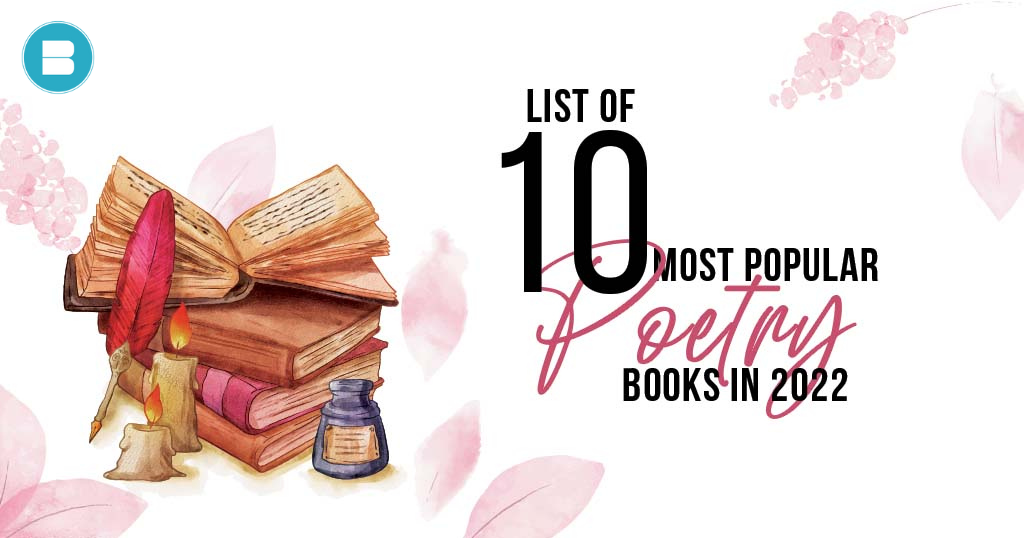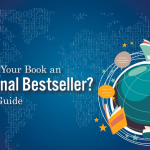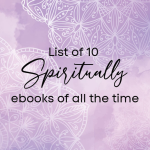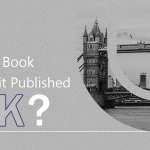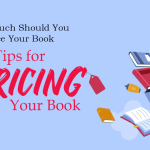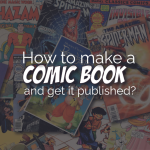Here’s a list of 10 Most Popular Poetry Books in 2022. Poetry is a literary form that employs language in a creative and expressive manner to portray ideas, emotions, and experiences. Poetry comes in a variety of styles, including sonnets, haikus, epics, and free verse, and it can cover a vast range of topics and subjects.
Poetry has a long and illustrious history, having origins in several civilizations and traditions. It has been used to tell stories, communicate emotions, deliver political messages, and provide insight into the human condition.
Many individuals enjoy reading and creating poetry because it has the ability to elicit strong emotions and convey complicated ideas in a simple and effective manner. Poetry has the potential to inspire, challenge, and affect its readers, and it may be a highly personal and intimate form of expression.
You may also like: How to Become a Writer: A Step-by-Step Guide for Authors
Here is a list of 10 highly regarded poetry books that have received critical acclaim and have had a lasting impact on the literary world:
- Time is a mother by Ocean Vuong
- Milk and Honey by Rupi Kau
- The Prophet by Khalil Gibran
- The Hurting Kind by Ada Limón
- Where the Sidewalk Ends by Shel Silverstein
- Howl by Allen Ginsberg
- The Bell Jar by Sylvia Plath
- The Complete Poems by Emily Dickinson
- Forever January by Srijla Guha
- Leaves of Grass by Walt Whitman
- Time is a mother by Ocean Vuong
Ocean Vuong searches for life among the aftershocks of his mother’s death in this highly personal second poetry collection, expressing the dichotomy of resting within loss while striving to survive beyond it. Vuong struggles with personal tragedy, the meaning of family, and the cost of being an American war product in America. Vuong’s poetry, at once vivid, daring, and propulsive, circle fragmented lives in search of both restoration and the source of the split.
These poems offer a more original and adventurous exploration with language and form, illustrating how the subjects we live in and question on a regular basis are actually inexhaustible. Time Is a Mother is a bold and prescient homecoming and testament to tenderness in the face of cruelty. - Milk and Honey by Rupi Kau
‘Milk and honey’ is a collection of survival poetry and prose. Concerning the feelings of violence, abuse, love, loss, and femininity. It is divided into four chapters, each of which serves a particular purpose. Deals with a different type of pain. Heals a different kind of heartbreak. ‘Milk and Honey’ takes readers on a trip through life’s most bitter times, finding sweetness in them because sweetness can be found anywhere if you are ready to look.
The first chapter, “the pain,” discusses the author’s personal experiences with sexual assault, abuse, and family troubles. The following chapter, “the love,” has a lighter tone because the general focus is about pleasant experiences. “The breaking” transports the reader to a sad period in the author’s life. The final chapter, “the healing,” is an attempt to console and convince ladies that they should embrace who they are and that they are worthy regardless of what they have been through. - The Prophet by Kahlil Gibran
The prophet Al Mustafa has been in Orphalese for 12 years and is about to board a ship that will take him back home. He is stopped by a group of people with whom he talks about life and the human condition. Love, marriage, children, giving, eating and drinking, work, joy and sorrow, houses, clothes, buying and selling, crime and punishment, laws, freedom, reason and passion, pain, self-knowledge, teaching, friendship, talking, time, good and evil, prayer, pleasure, beauty, religion, and death are all covered in the book.
The Prophet has been translated into over 100 languages, making it one of the most translated and best-selling novels in history. It’s never gone out of print. - The Hurting Kind by Ada Limón
The Hurting Kind investigates these topics by embracing other people’s tales and methods of knowing, taking unexpected twists, and always arriving at a point of astonishing understanding. These poems go through the seasons, abounding with horses, kingfishers, and fish with glittering eyes. They also recognise parents, stepparents, and grandparents: the sacrifices made, the separate lives lived, the sympathy provided to a wounded kid; the abundance of having two families, in hindsight.
We see loss along the way. There are glimpses of the pandemic, spirits whose presence shows in unexpected memories, and the strange behaviour of creatures abandoned. But, above all, The Hurting Kind is replete with connection and the joy of being in the world.
- Where the Sidewalk Ends by Shel Silverstein
Shel Silverstein’s 1974 children’s poetry volume Where the Sidewalk Ends was written and drawn by him. The poetry in the book address many common childhood worries while also presenting totally fictitious stories and image-inspiring pictures.
You’ll encounter a boy who transforms into a television set and a female who devours a whale. The Unicorn and the Bloath dwell there, as does Sarah Cynthia Sylvia Stout, who refuses to take out the trash. It’s a land where you can wash your shadow and plant diamond gardens, where shoes fly and sisters are auctioned off, and where crocodiles go to the doctor. Shel Silverstein’s excellent collection of poetry and drawings will be treasured by readers of all ages. - “Howl” by Allen Ginsberg
Allen Ginsberg’s “Howl” is a long, free-form poem released in 1956. It is one of Ginsberg’s most renowned compositions and a cornerstone of the Beat movement, which originated in the 1950s and was linked with a rejection of traditional values and a concentration on individual freedom and creativity.
“Howl” is a vast, outlandish poetry that questions societal standards while celebrating individual freedom and inventiveness. It is notable for its unorthodox use of language and imagery, as well as its examination of issues like as sexuality, drug use, and nonconformity. “Howl” has had a long-lasting impact on the literary world and is regarded as a significant work of the Beat generation. It is well-known for its strong, expressive language and investigation of controversial and taboo issues. - “The Bell Jar” by Sylvia Plath
“The Bell Jar” chronicles the narrative of Esther Greenwood, a young woman suffering from sadness and isolation. Esther is followed as she navigates the hurdles of growing up, including her relationships, education, and job goals. Plath examines issues of identity, femininity, and mental illness throughout the work, as well as the hardships and expectations that women faced in the 1950s and 1960s. “The Bell Jar” is noted for its dramatic, honest portrayal of mental illness, as well as its investigation of the difficulties that many young women encountered at the time.
You may also like: 10 Must-Have Apps for Accessing Digital Books Anywhere
- “The Complete Poems” by Emily Dickinson
Emily Dickinson’s “The Complete Poetry” is a compilation of poems by the American poet recognised for her unique use of language and structure. The collection contains over 1,800 poems written by Emily Dickinson over the course of her life, many of which were not published until after her death.
Dickinson’s poetry is recognised for its brevity, unorthodox language and style, and contemplation of death, love, and the natural world. Her poetry is frequently very personal and contemplative, reflecting her own perspective and experiences. Many of her most renowned poems are included in “The Complete Poems,” including “Hope is the thing with feathers,” “Because I could not stop for Death,” and “I’m Nobody! Who are you?” These poems are well-known for their vivid imagery and explorations of mortality, identity, and the human experience. - Forever January by Srijla Guha
Forever January is an alluring poetry book written by Srijla Guha. The book hold the theme of small natural elements of life and relates it to an epic love that makes you feel all sorts of emotions. This collection of poetry makes you float through each and every word that conveys each and every emotion with intricacy.
The poet merely conveys a simple fact that falling in love and feeling all those beautiful euphoric emotions is nothing but a journey for a quest where the treasure can either be love or a lesson.
The poet has used an interesting blend of rhyming and free verses that creates a magical aura for the person who reads. The theme is all about love, passion, sensuality, and maturity – the poems let the readers give in to the feeling that are expressed in the verses. They talk about love as a person; they talk about love as a colour; they talk about love as a season; they talk about love as a promise – love has many shades and faces yet we fall for the simplest one – person. - “Leaves of Grass” by Walt Whitman
Walt Whitman’s poetry collection “Leaves of Grass” was first published in 1855. It is regarded as one of Whitman’s masterpieces and a watershed moment in American literature. “Leaves of Grass” poetry are renowned for their appreciation of the individual, nature, and the common person. Many of the poems are in free verse and are notable for their use of imagery and sensory richness.
“Song of Myself,” “I Sing the Body Electric,” and “Out of the Cradle Endlessly Rocking” are among the most famous poems in “Leaves of Grass.” Whitman reworked and enlarged “Leaves of Grass” throughout his career, and it remains an essential and influential work of American literature to this day.
You may also like: International Publishing: Expanding your reach beyond borders

